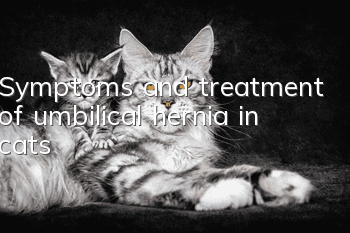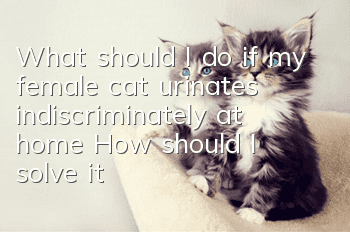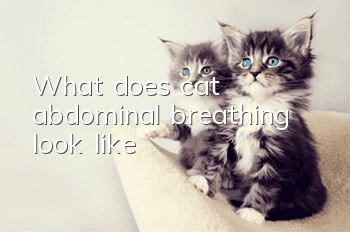Symptoms and treatment of umbilical hernia in cats

Analysis of the causes of umbilical hernia in cats
It is easy to confuse umbilical hernia and abdominal wall hernia in cats. In fact, there are many differences between umbilical hernia and abdominal wall hernia, which can be judged through clinical symptoms, imaging examinations, laboratory tests, etc. Umbilical hernias are often discovered when there is a developmental defect in the sexual organs.
Umbilical hernias are often congenital and are caused by poor embryonic development. The umbilical vein, vitelline duct, and allantoic stalk pass through the umbilicus during fetal life, but they close during birth, leaving a navel scar. If this hole is still relatively large after birth, or is not closed or is not closed completely, it will cause umbilical hernia. Because this hernia is wrapped by the peritoneum, it is a true hernia. The cause of umbilical hernia is still unclear, but it is generally believed to be hereditary. Many male dogs with umbilical hernias often also have cryptorchidism.
Clinical symptoms of umbilical hernia in cats
Umbilical hernia in cats is often discovered when there is a developmental defect in the sexual organs, and the cat’s mental status is relatively normal. Since cat umbilical hernia is a congenital cause, the probability of inheritance is not high. However, if a female cat has an umbilical hernia, the abdominal pressure will increase after pregnancy, which can easily cause the cat's life to be in danger.
Umbilical hernia usually appears as a soft mass in the abdomen at the umbilicus. Deep palpation of the protrusion allows one to feel the size of the umbilicus and helps determine the nature of the contents. In some animals the umbilicus cannot be palpated because it is closed by the sickle fat and omentum. Sometimes the intestines or other organs can be felt, and often these can be returned to the abdominal cavity. If the hernia sac is warm or painful and its contents cannot be retracted, intestinal adhesions and obstructions should be suspected.
Treatment of umbilical hernia in cats
Small umbilical hernias in dogs and cats generally have no clinical symptoms and do not require treatment. Small umbilical hernias in female dogs and cats can also be repaired during the sterilization surgery to remove the ovaries. Large umbilical hernias cannot heal themselves and the contents often become adhesions as the disease progresses, so surgery must be performed as soon as possible. The surgical method is to make a circular incision at the base of the umbilical hernia to separate the hernia sac and expose the contents. If no adhesions occur, it can be directly brought into the abdominal cavity and sutured. If there is adhesion, the falciform ligament or omentum can be removed. If the intestine is necrotic, enterotomy and intestinal anastomosis must be performed before it can be reinstated into the abdominal cavity. After surgery, you should also reduce your diet and limit your pet’s strenuous activities to prevent recurrence.
- A piece of cat's skin is hairless and white meat is exposed
- Why do cats often lick their fur? What are the reasons?
- Do pet cats have bacterial infections?
- How to correct a biting cat? Corrective training for biting cats
- Is it normal for cats to bleed from their sterilization wounds?
- What should I do if my cat sheds hair frequently?
- What does it mean when a cat breathes?
- What causes cats to poop and urinate randomly?
- What should I do if my cat keeps peeing everywhere?
- Why does my cat have brown discharge from his eyes?



